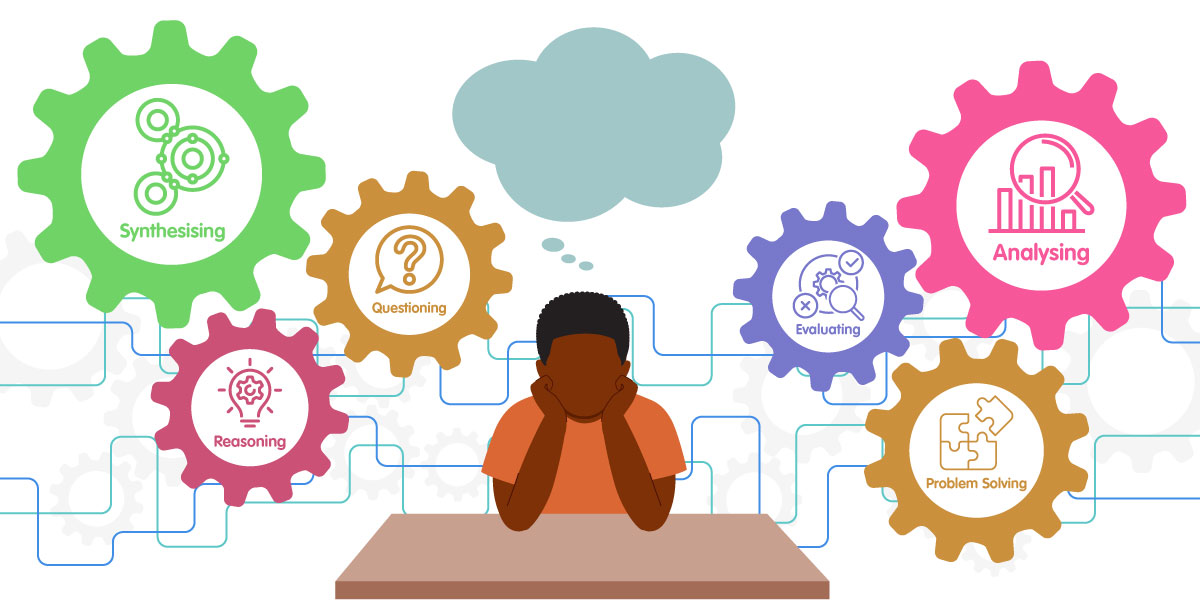Unlocking the Power of Critical Thinking in Education

Introduction
Critical Thinking (CT) was ranked by the World Economic Forum as one of the most essential skills in tomorrow’s labour market, as it is the lifeblood of problem solving, good judgement and sound analysis. Rooted in fostering intellectual values such as accuracy, relevance, evidence, and reasoning, CT transcends disciplinary boundaries. It serves as a compass, guiding individuals to question, infer, and view situations through a critical lens rather than passively accepting information. In this piece, we delve into the enduring significance of CT, and unveil the transformative role of ed tech in harnessing it.
A Lifelong Journey to Dissolve the Flaws in Human Thinking
Critical Thinkers embody the Socratic principle that the unexamined life is not worth living. They realize that many unexamined lives together result in an uncritical and unjust world and as a result, embark on a disciplined journey, cultivating virtues such as humility, integrity, civility, and moral justice. Fully aware of the inherent flaws in human thought, they acknowledge their potential for errors and biases, employing unwavering self-awareness to rigorously assess their reasoning, identify imperfections, and anticipate critique on the path to self-improvement. This journey discourages simplistic thinking on complex issues, gradually dismantling sociocentric and egocentric tendencies while nurturing empathetic and analytical thought.
The Art of CT Vs. Non-CT
While all humans possess the capacity for thought, a select few master the art of CT. But what sets this cognitive process apart from mere thinking?
Thinking can be coined as ‘the mere acquisition and retention of information alone’. In its most basic form, it constitutes the mental act of generating thoughts, triggered by stimuli or even devoid of reason. Thinkers tend to accept a limited perspective based on personal values and societal beliefs, often neglecting analysis and resisting criticism.
Critical thinkers, in contrast, delve far deeper into a particular issue before taking decisive action, guided by intellectual commitments. These individuals recognize their knowledge gaps and approach the world with open-mindedness, and welcome critical scrutiny to their beliefs. They base their reasoning on hypotheses, evaluations, and logical inferences, often supplementing the traditional “who, what, where, and when” questions with “why”.
CT’s Place in Modern Education
A primary objective of education is to nurture amongst students the skills of innovation, collaboration, creative problem-solving, and effective communication. In today’s rapidly evolving global landscape, institutions must adapt these principles to meet the demands of a market-driven society.
Scientists have frequently asserted that the essentialism and perennialism on which traditional education is based nurtures individuals who are monotype route-learners, guided towards a culture of recital and repetition as opposed to the CT characteristics of skilful analysis and interpretation.
In the contemporary context, education should not serve as a means of mere formalization but rather as a catalyst for freedom. Institutions should aspire not just to impart knowledge but to instil in students the habits of CT, encouraging them to pose thought-provoking questions and assume an active role in the learning process, the knowledge then cascading beyond the classroom and into communities and workplaces. Such an approach enables students to differentiate between competing hypotheses, recognize the importance of replicability and falsifiability, and grasp that correlation does not imply causation.
The Genee Take
“CT serves as the cornerstone of today’s information-rich world. The basic idea undergirding its manifestation in education is to move from typical thinking models to an advanced way of thinking.
Creating an environment conducive to CT involves prioritizing open dialogue, anchored instruction, and mentorship. Fortunately, modern education has found a valuable ally in ed-tech. Specifically, interactive displays, visualizers, various innovative software, and other classroom accessories play a pivotal role in transforming traditional learning environments into dynamic hubs for critical thought.
They captivate students’ attention by offering multimedia-rich content, encouraging active participation and sparking curiosity. The visual aids enhance comprehension and retention, while the collaborative features promote teamwork and encourage the exchange of diverse perspectives – a cornerstone of CT. Having access to real-time feedback and tailored learning channels fosters an iterative process, granting students the capacity to evaluate information, identify errors, and refine their thought processes. By leveraging these technologies, educators empower students to navigate a complex, information-rich world with the analytical skills needed to thrive and adapt.
One thing is certain – Through the incorporation of ed tech, institutions will be strategically positioned to steer their learners towards the realization of their utmost potential.”
